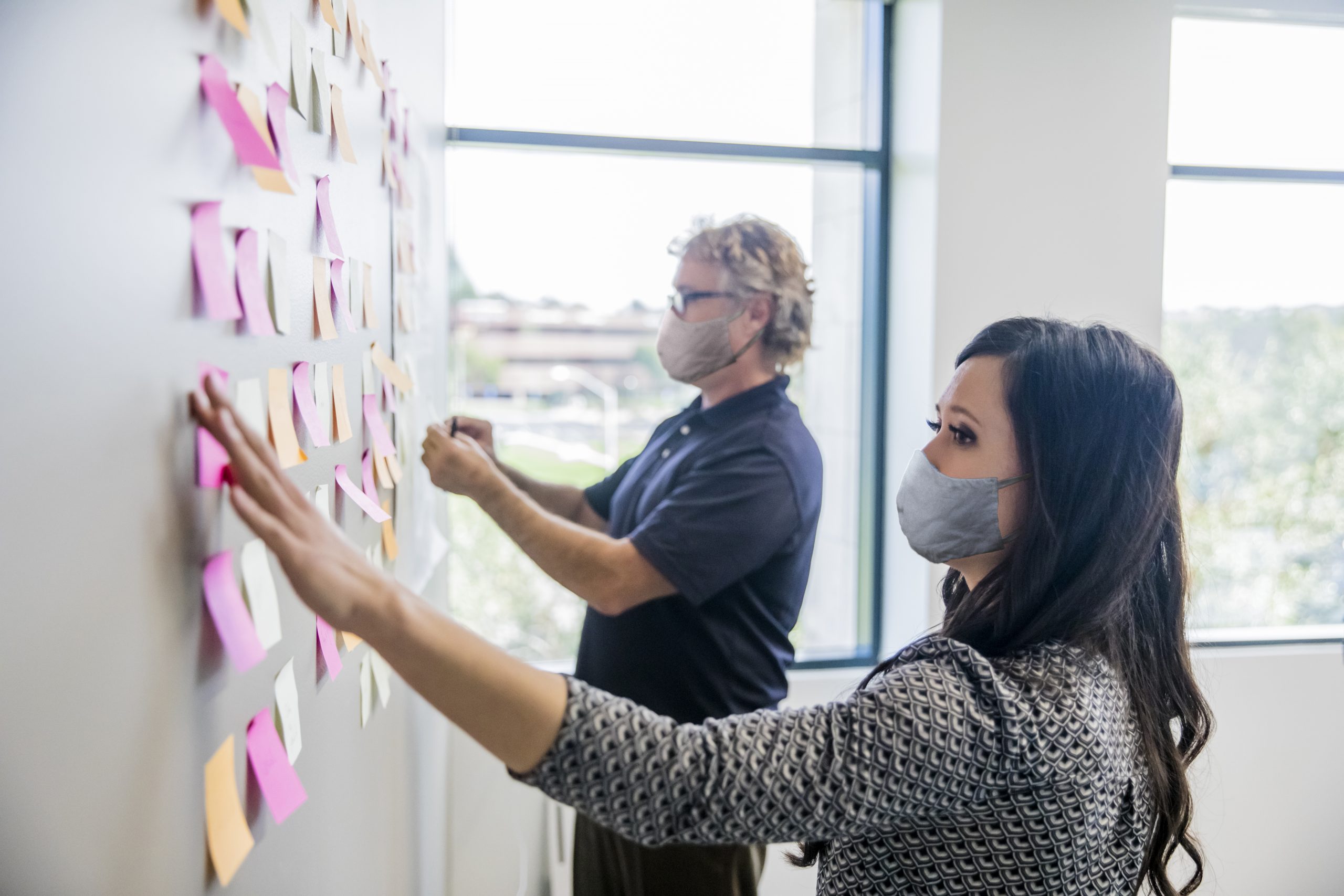It’s become something of a cliché to say that we’re living in uncertain times — but times of uncertainty can be powerful opportunities for new ideas to take root. After all, certainty can be a form of complacency. When we feel sure of our own power and position, we have no reason to question our assumptions about the present or imagine a different future.
To push ourselves to recommit to the radical imagining and experimental mindset — which has always shaped American democracy — Democracy Fund decided to spend the last few months leaning into uncertainty, deliberately engaging with different ideas and perspectives about what our democracy’s future might look like. We asked Dot Connector Studio to help us figure out how to do this, with an experimental project we ended up calling “Democracy TBD.”
How we designed Democracy TBD
Our intention with Democracy TBD was to start to think through how the current pandemic, racial unrest, and concerns about the election might spark a cycle of disruption and reorganization. Which aspects of our democratic system might prove more resilient, and which might be fundamentally altered? How might these changes affect Democracy Fund’s efforts to support robust civic participation, responsible journalism, fair elections, effective governance, civil rights, and rule of law? Our goal was not to develop a list of fully fleshed-out scenarios, but rather to anticipate the pathways by which major changes might happen and then to consider how we could help shape those pathways rather than react to them after the fact.
We decided to reach out to people that we didn’t necessarily know, whose interests and experiences weren’t just related to politics and government, and asked them to join a series of scenario-planning conversations. In August, we convened participants in five small working groups to talk with them about what big changes might be in store for our country, and what about our democracy was “to be determined.” Participants included authors, economists, musicians, journalists, urban planners, technologists, and others, representing a diversity of gender, race, and geography.
What we have learned so far
Our first working group sessions took place in August, over Zoom. We focused on identifying events that have the potential to trigger system-level disruptions. We arrived at these “disruptors” by observing current signals — i.e., events which suggest change with the potential to spread. Chatting from makeshift home offices, occasionally pausing to help kids reconnect to their virtual classrooms, and momentarily stepping back from news updates on wildfires and hurricanes, it was not hard for participants to identify myriad potential disruptors they are considering in their own life and work. Some of the disruptors we identified were more speculative, but others were very real and immediate.
We then asked the participants to choose a disruptor from the conversation, and map it against a framework we call “STEEP+C.” Futurists and business strategists often use a “STEEP” framework to understand how a given disruptor might have both positive and negative ripple effects across Social, Technological, Economic, Environmental and Political sectors. We have added a “C” for “Creative” for our conversations, because we believe that arts, media and culture have the potential to both shape and capture major disruptions. Our hope has been to center the power of imagination in this work.
Take the following disruptor, for example: a COVID vaccine is not available until the end of 2021. We posited that there would be: indefinite work-from-home policies introduced by companies (Social), a strain on internet bandwidth and a widened digital divide (Technological), wide-scale job loss and pressure on the social safety net (Economic), a decrease in emissions and use of public transit (Environmental), increased demand/support for government intervention (Political). We also speculated that artists would start connecting more directly with audiences (Creative).
Doing so allowed participants to build out fuller scenarios about what these disrupted systems might look like. In the second set of working group sessions, we discussed each other’s scenarios and reflected on what these scenarios might mean for our democracy. It was clear that the anxiety of our current moment sat heavily on participants: scenarios explored themes of rising inequality, civil discord, climate disasters.
We brought participants back together in mid-August to reflect on the themes we distilled from the conversations. By that point, several participants had also taken us up on the offer to develop creative responses sparked by the process. The conversation, and the creative responses, surfaced themes of disintegration, fragmentation, inequality, corruption, authoritarianism, and polarization — but also renewal, cooperation, and mobilization. As we continue to sift through the wide range of possible futures our participants explored, our expectation isn’t to land with any certainty on what the next ten or twenty years might hold for our country. Quite the contrary: we’re hoping it raises lots of questions about what’s possible, and pushes us to look at our democracy, with all its flaws but also all its promise, in new ways. We look forward to sharing those questions, and those new ideas, with you. Stay tuned!
